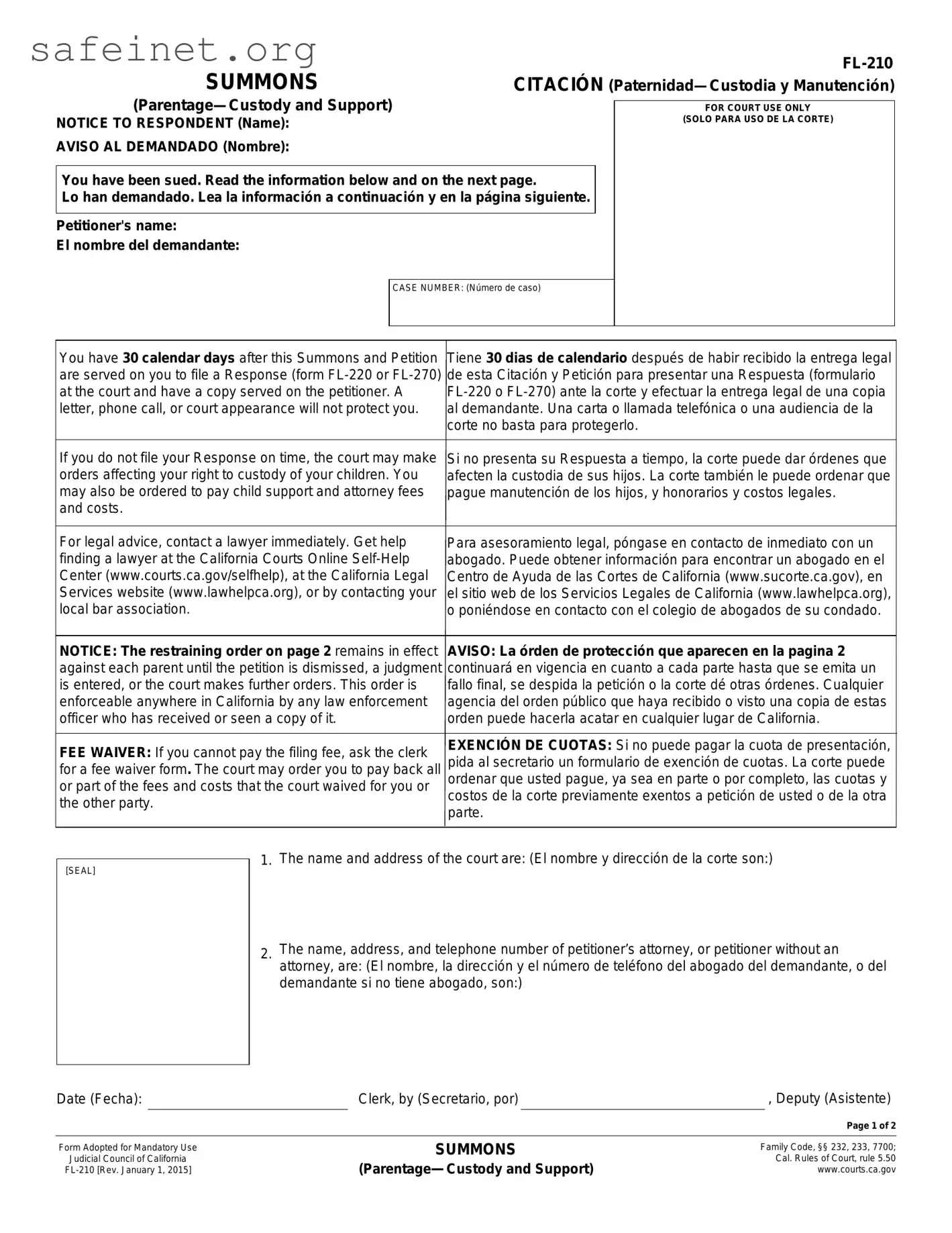The FL-210 form is similar to the FL-220 Response form. The FL-220 is the official document used by the respondent in a custody and support case to answer the charges laid out in the FL-210. While the FL-210 notifies the respondent of the lawsuit, the FL-220 allows the respondent to present their side of the story. It outlines their position, requests for custody, visitation, or support, and general responses to the claims made by the petitioner. The FL-220 must be filed with the court within 30 days, ensuring both parties have the opportunity to present their case.
The FL-260 form is also related to child custody and support matters. Like the FL-210, it serves as a summons but is specifically used for issues involving modifications to existing custody orders. The FL-260 notifies the affected parties about the changes being sought. Similar to the processes initiated by the FL-210, this document sets timelines for responses, ensuring that all parties are aware of their obligations under the law. Both forms strive to facilitate fair legal proceedings surrounding custody issues.
Another related document is the FL-300 Request for Order form. This form is used by either party to ask the court for specific orders regarding child custody, visitation, or support. It differs from the FL-210, which is a summons, because the FL-300 focuses on making a formal request for specific actions. However, they both play fundamental roles in child custody cases, as the FL-300 response often follows the notifications set forth in the FL-210 regarding custody matters.
The FL-330 Declaration Under Uniform Child Custody Jurisdiction and Enforcement Act (UCCJEA) is another important document in custody cases. This form aims to establish whether the child’s home state law allows for it to assert jurisdiction over custody issues. Like the FL-210, it is concerned with where the child resides and the legal authority to decide matters affecting their well-being. This helps define the court’s authority in line with the rules governing child custody across state lines.
The FL-310 Child Custody and Visitation Application form aligns with the FL-210 in focusing on the rights and responsibilities of each parent regarding custody and visitation. This form is used in situations where parents need the court to define or modify existing arrangements. While the FL-210 serves as a summoning document to initiate the legal process, the FL-310 both formally requests specific custody arrangements and helps clarify the needs of the children involved.
The FL-420 Child Support Case Registry Form is also similar in context, as it collects vital information about the parties involved in a child support case initiated by the FL-210. This form allows the court to maintain updated records regarding the financial responsibilities of each party. Though its purpose is distinct, both documents are pivotal in the broader structure of family law, supporting the establishment of child support obligations once the custody case is underway.
The FL-200 Petition for Custody and Support of Minor Children is also relevant, as it lays the groundwork for a child custody case, much like the FL-210. While the FL-210 summons the parties, the FL-200 petitions the court for specific relief regarding child custody arrangements. Both play critical roles in making court proceedings clear and organized, ensuring that all parties understand the nature and seriousness of the claims being made.
Finally, the FL-250 Proof of Service of Summons form is crucial as it documents that the FL-210 has been properly served to the respondent. The Proof of Service confirms that the respondent is aware of the legal action against them. This form is necessary to validate the legal processes initiated by the FL-210 and is vital for ensuring that the court can proceed with the case, maintaining visibility on each party's status in the judicial process.


